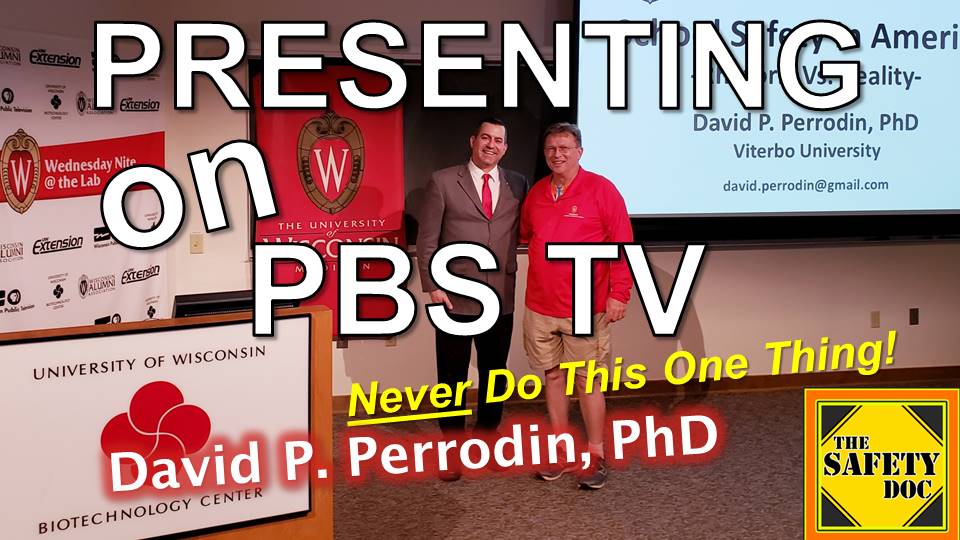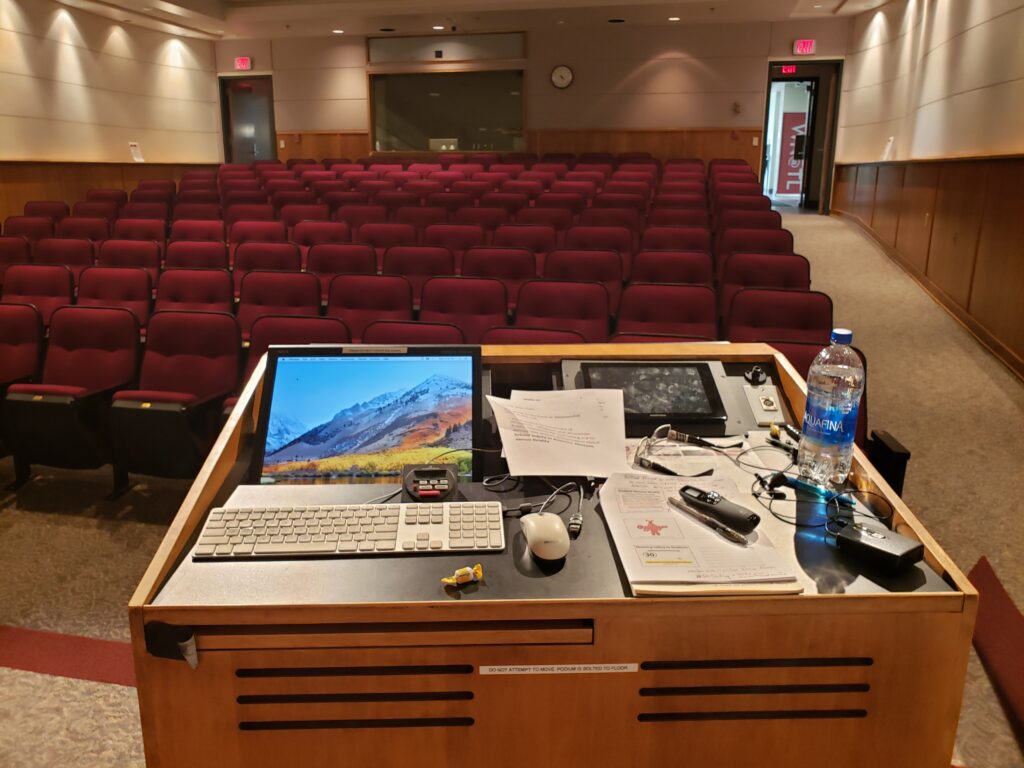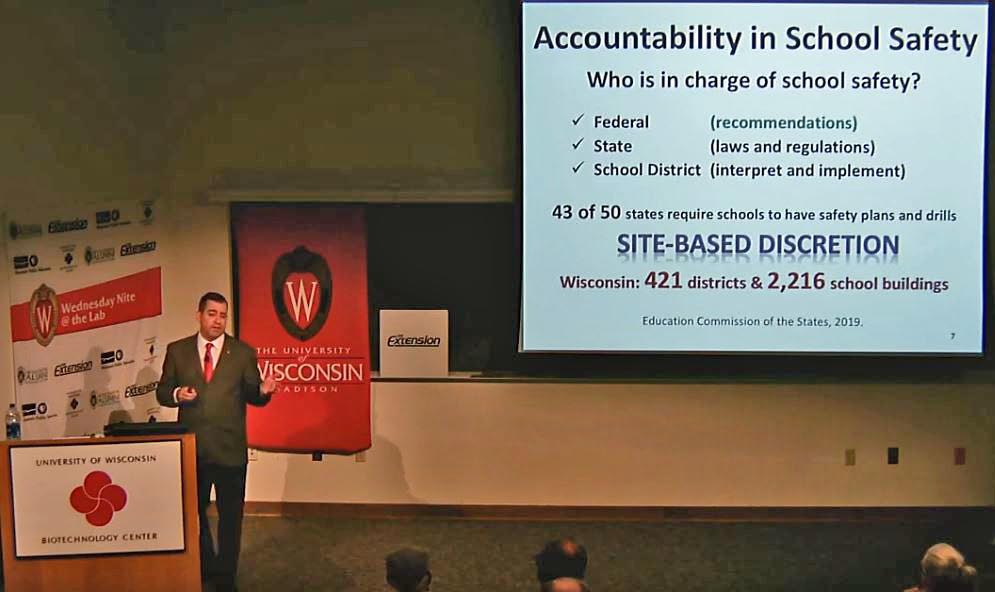What It Was Like to Present Live School Safety Specials on PBS TV | Never Do This One Thing | SDP191
Presenting on PBS TV entails luck, months of preparation, and confidence. Entrusted as a topic ambassador sets forth high expectations – not to mention standing before a live audience. I delivered two school safety presentations on PBS TV: School Safety in America: Rhetoric vs Reality (2019) and School Security and Crisis Preparedness (2013). In this episode, I will explain how I received an offer to present on PBS; show preparation; things that happen the day of the broadcast; giving the presentation – including the techy podium; rules and tips for a successful televised show; what happens immediately following the show – it’s not what you might think; what PBS does with the presentation – from close-captioning to syndication; and how people around the nation responded to me in days and even years after I was TV.

DIRECT LINK to MP3 of this Episode: https://tinyurl.com/SDP191-AUDIO
HOW TO GET AN OFFER TO PRESENT ON PBS. I was a school administrator on December 14, 2012. That was the day of the Sandy Hook Elementary School massacre. It was a watershed moment in school shootings due to the young age of the students. Media coverage swarmed to the community of Newtown, Connecticut, and wagged microphones at anyone who would speak. After that adrenalized day, parents and educators sought empirical guidance on school safety. There wasn’t a clearinghouse presentation – an impartial expert attempting to frame, in layman’s language, the phenomena of school security and how and why schools prepare for crisis situations – what are the ingredients to their plans and are we as powerless to interrupt disasters as was implied by the media. So, I contacted my local PBS affiliate, pitched the idea of a school safety special, and the folks in charge issued the green light. I would assemble and deliver PBS’s first school safety special.
SHOW PREP. Where to begin, right? My show was scheduled for May so I had roughly 5 months to craft my presentation. I spent hundreds of hours developing outlines, PowerPoint slides, rehearsing, and having member checks evaluate my content and delivery. I also contacted parents of children killed or injured in acts of school violence. My presentation would be tight and punchy, but I had to read the room. I would not stir grieving parents. Instead, they served as member checks, to point to the line in the sand. The show wasn’t about the students, teachers or parents – but they were all wedded to the topic.
DAY OF THE SHOW. I arrived 3 hours before air time. Phase one is acclimating to the studio and receiving coaching on the various knobs, screens, and lights on the massive podium. Next, I signed waivers. Then it was time for the dry run in an empty hall. Other than sound checks, I spoke softly to preserve my voice. Some last-minute adjustments to font sizes, too. About 30 minutes before the show, the doors opened and people claimed seats. I made small talk with the host and the presentation was locked from future changes.

THE PRESENTATION – RULES & TIPS. Stay behind the podium and look at the real-time display embedded in the lectern to track your presentation. It was OK to periodically step left of the podium. It was never appropriate to look over your shoulder and point to the big screen in front of the audience. That might mess up the camera crew and the people at home were fed from different angles from the person in the third row. Watch the timer on the podium, colored lights up in the booth, and friends in the audience strategically placed to cue me on time markers. Hitting the allotted time was not only necessary, but going long would limit the ability for syndication. 60 minutes.

WHAT HAPPENS AFTER THE SHOW | NOT WHAT YOU MIGHT THINK! The end of the show isn’t the actual end of the show. Off camera, the presenter answers questions from the audience and this can go on for an hour or more. I even went out for an impromptu late supper with audience members!
DOES PBS RERUN THE PRESENTATION? Yes. After the live presentation, PBS edits, closed-captions, and submits the show for a TV Parental Guidelines rating. The presentation is then premiered and available for syndication by affiliate networks. My shows continue to air on PBS stations – especially following a sentinel school safety event. In addition, the shows are available to view at no cost at PBS.com.
RESPONSES TO MY PRESENTATIONS. People have emailed, called, and met me in person to share their thoughts about my shows. School leaders, board of education members, and school safety directors convey that the content validates their efforts toward sensible school safety. Parents share personal stories. Others inform me of their research and lines of inquiry, such as a relationship between food additives and violence.
This is episode 191 of The Safety Doc Podcast published on 10-19-2022. This podcast and blog post represent the opinions of David P. Perrodin and his guests to the show. The content here is for informational purposes only. Please consult with your safety professional regarding the unique needs of yourself or your organization.
FOLLOW
- Watch this episode on “The Safety Doc” YouTube channel https://tinyurl.com/SDP191-VIDEO
- Listen to this episode on PodBean MP3 https://tinyurl.com/SDP191-AUDIO
- Apple Podcasts http://tinyurl.com/SafetyDocApplePodcasts
- SAFETY DOC WEBSITE & BLOG safetyphd.com
- Follow David & The Safety Doc Podcast on Twitter @SafetyPhD
- Email Dr. Perrodin thesafetydoc@gmail.com
Purchase Dr. Perrodin’s books
School of Errors – Rethinking School Safety in America
The Velocity of Information – Human Thinking During Chaotic Times
